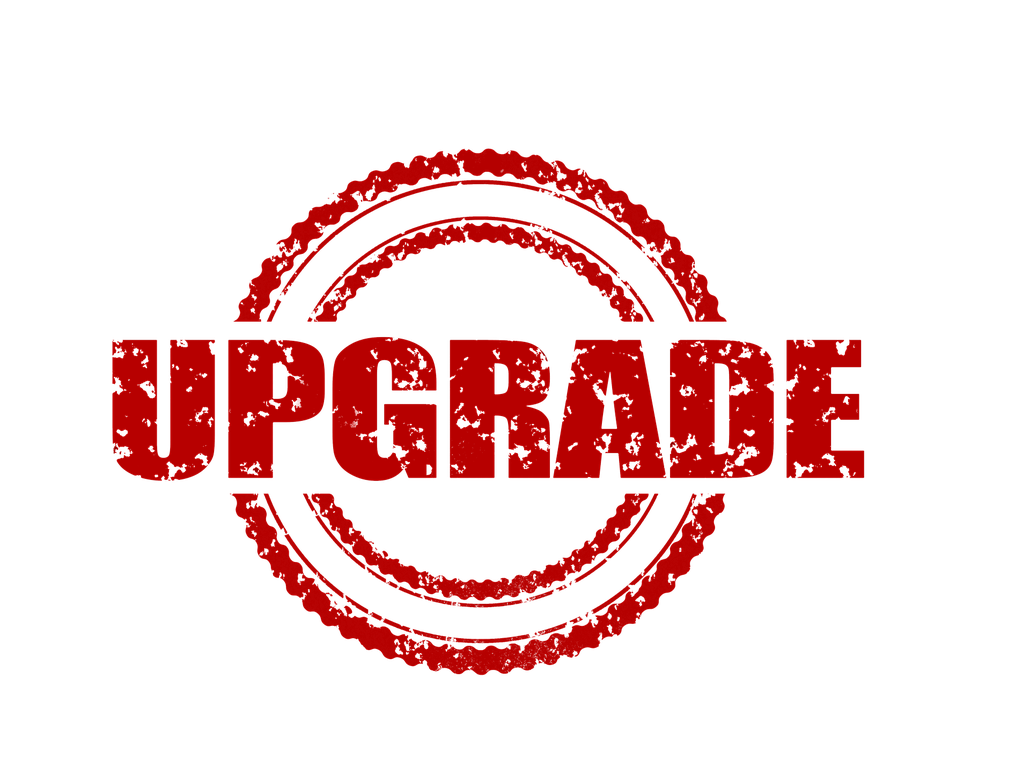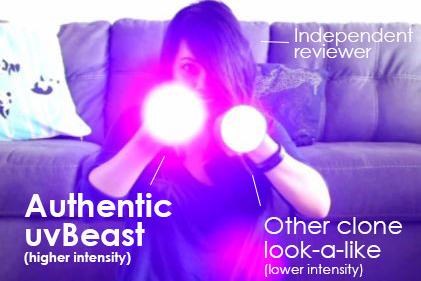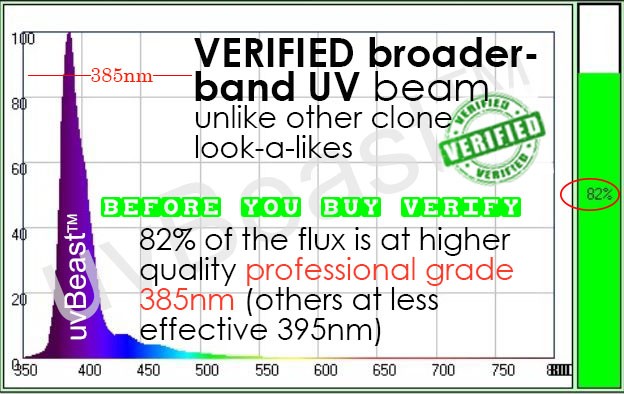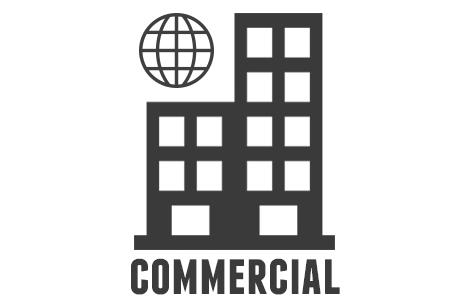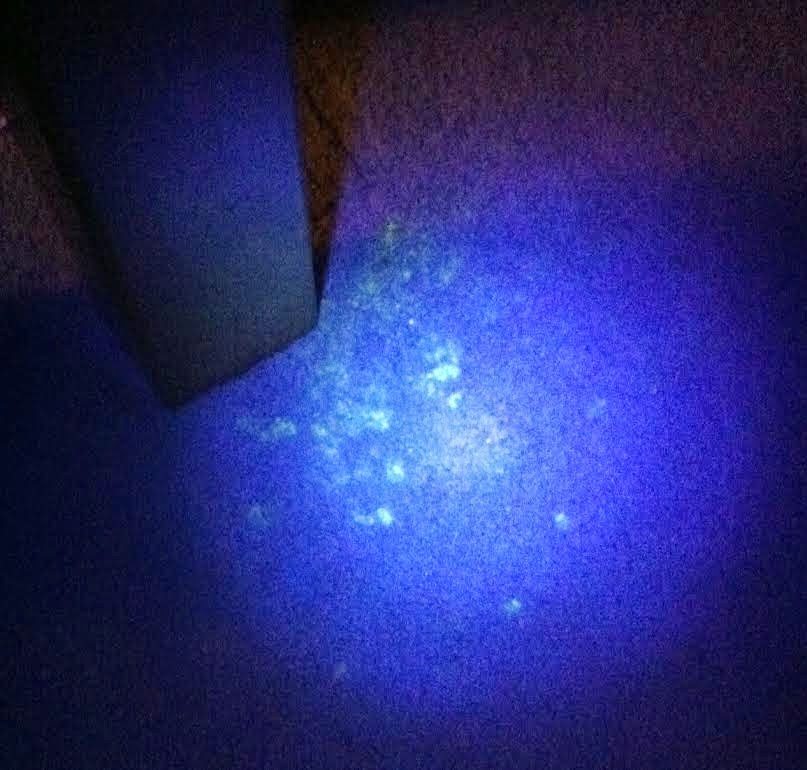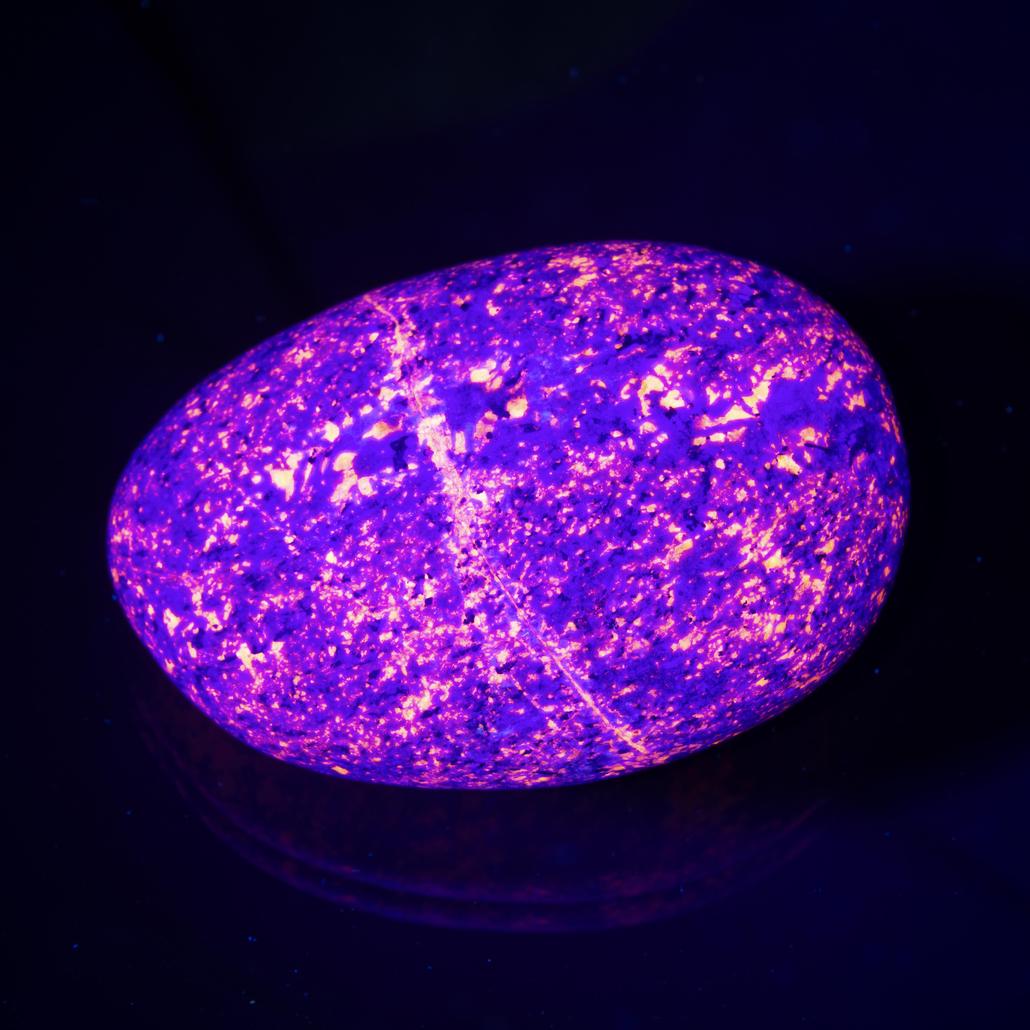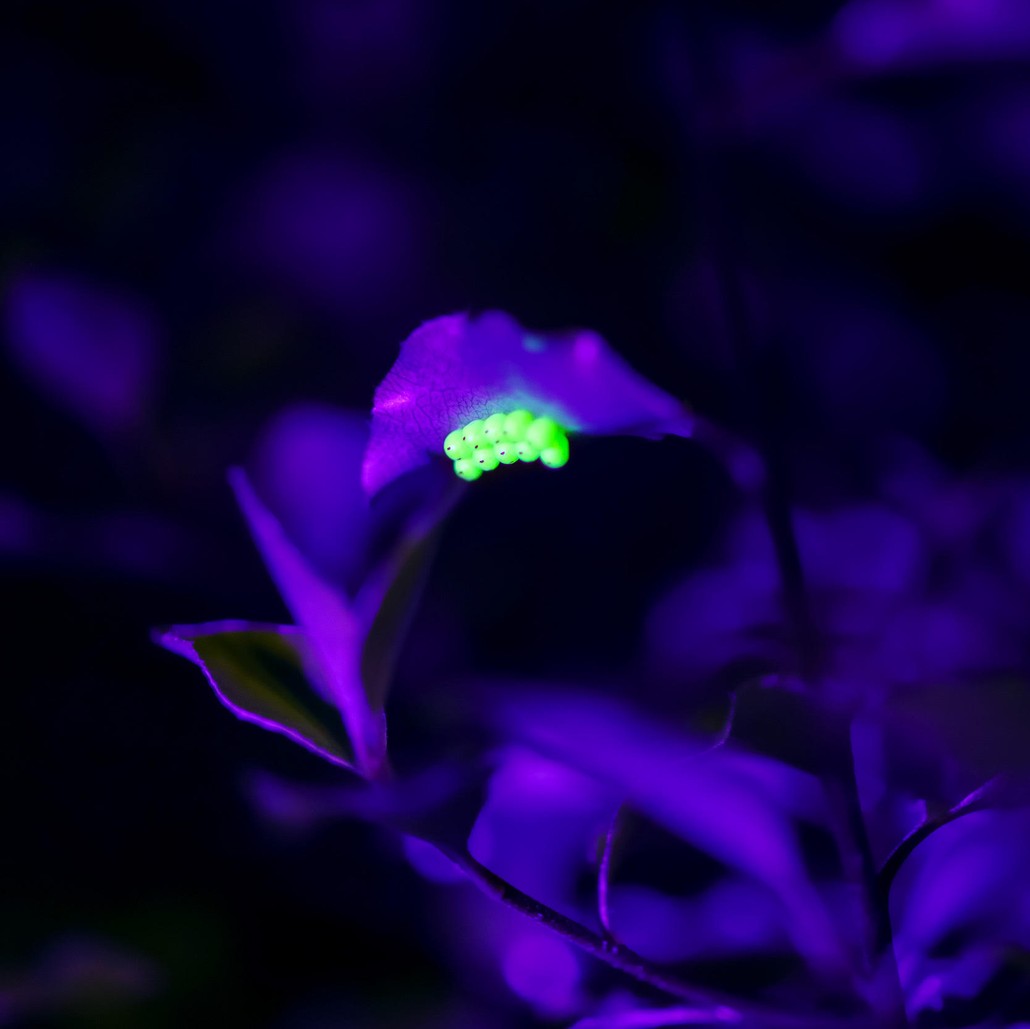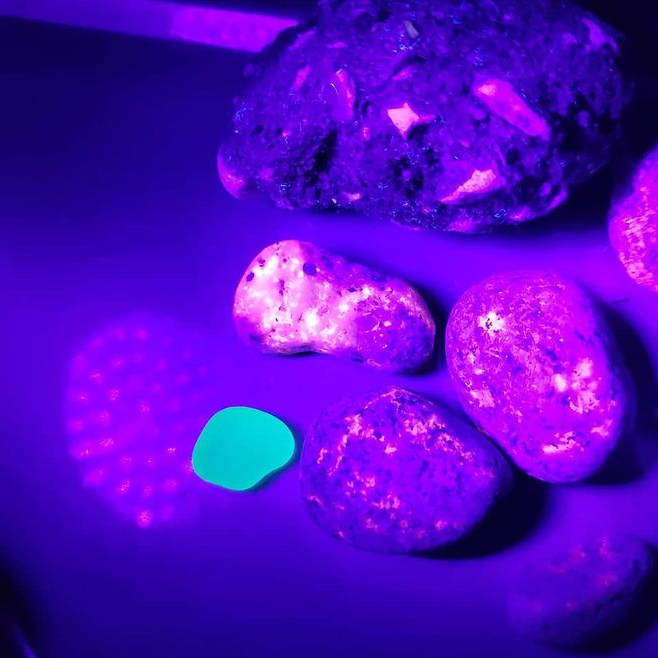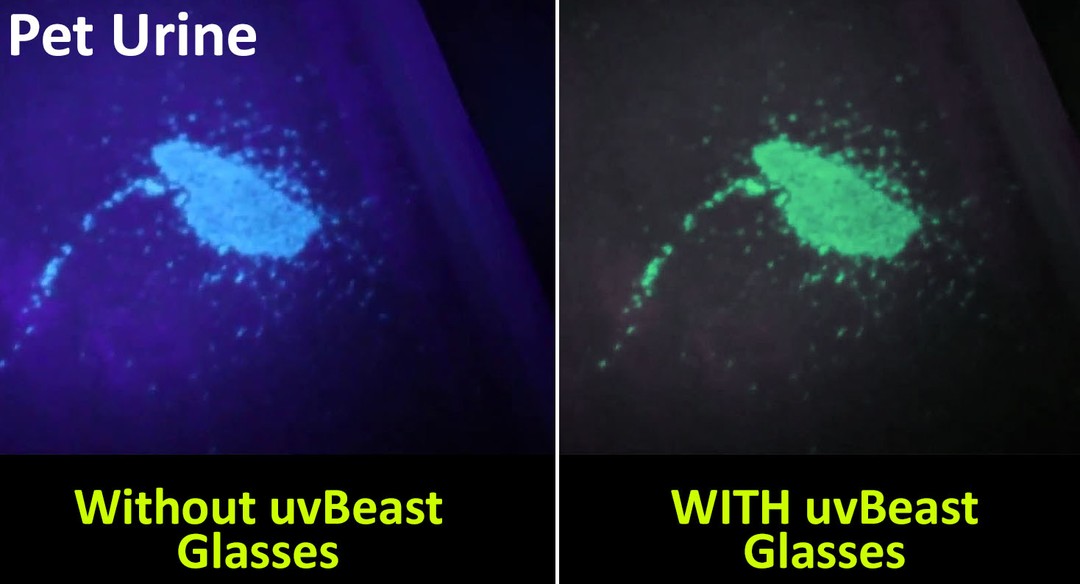"High power UV is our speciality". Ships from the USA. Fast and free. LIMITED STOCKS
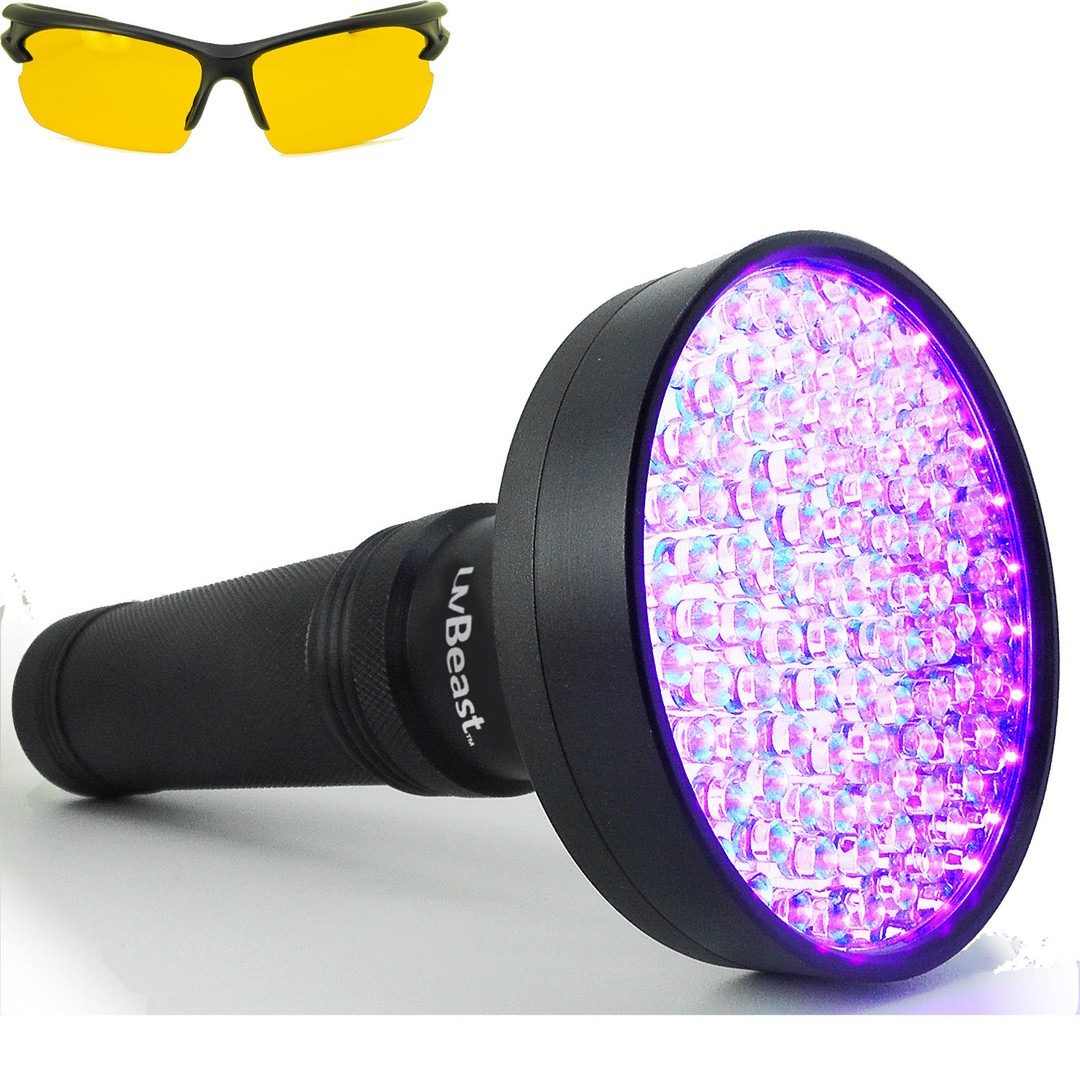

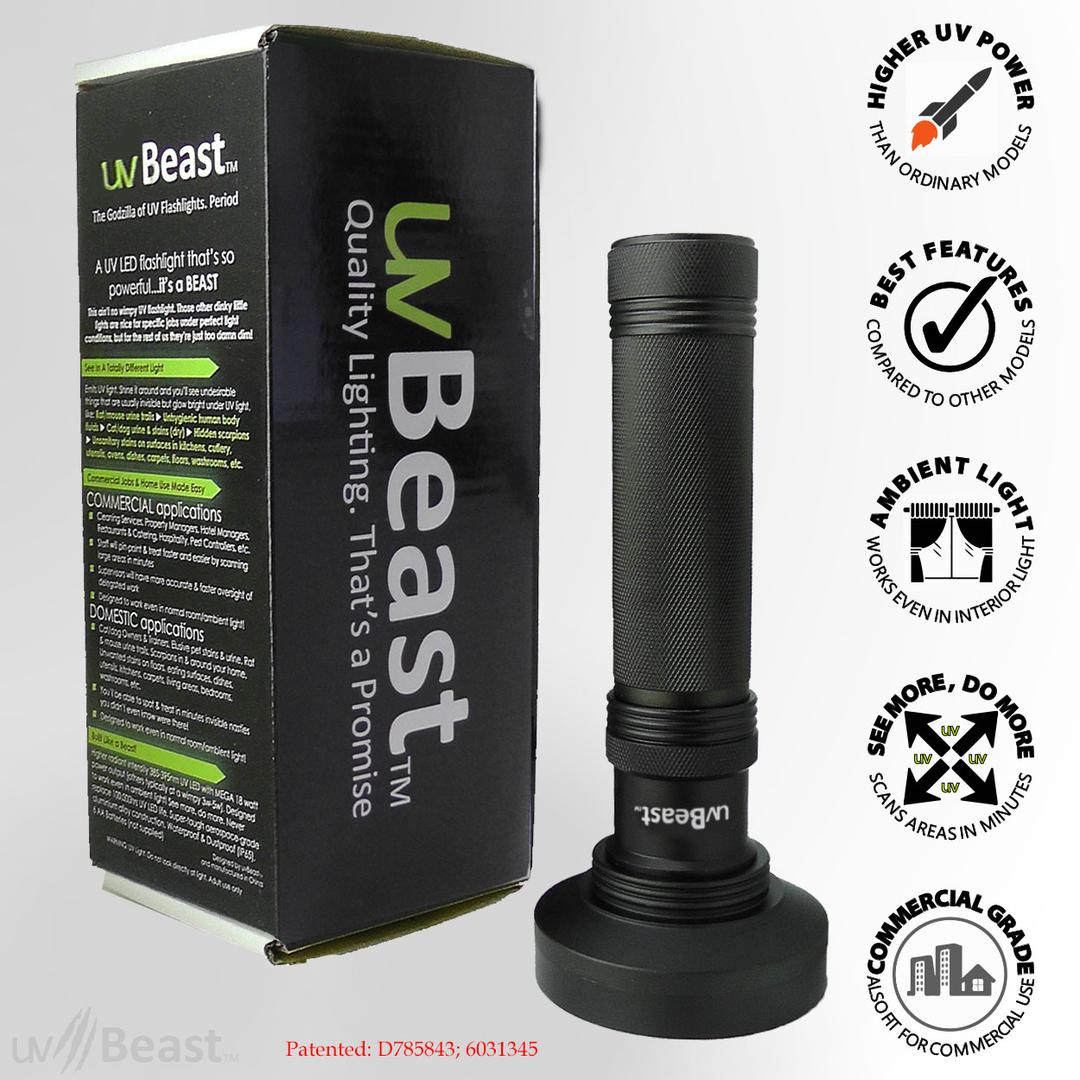
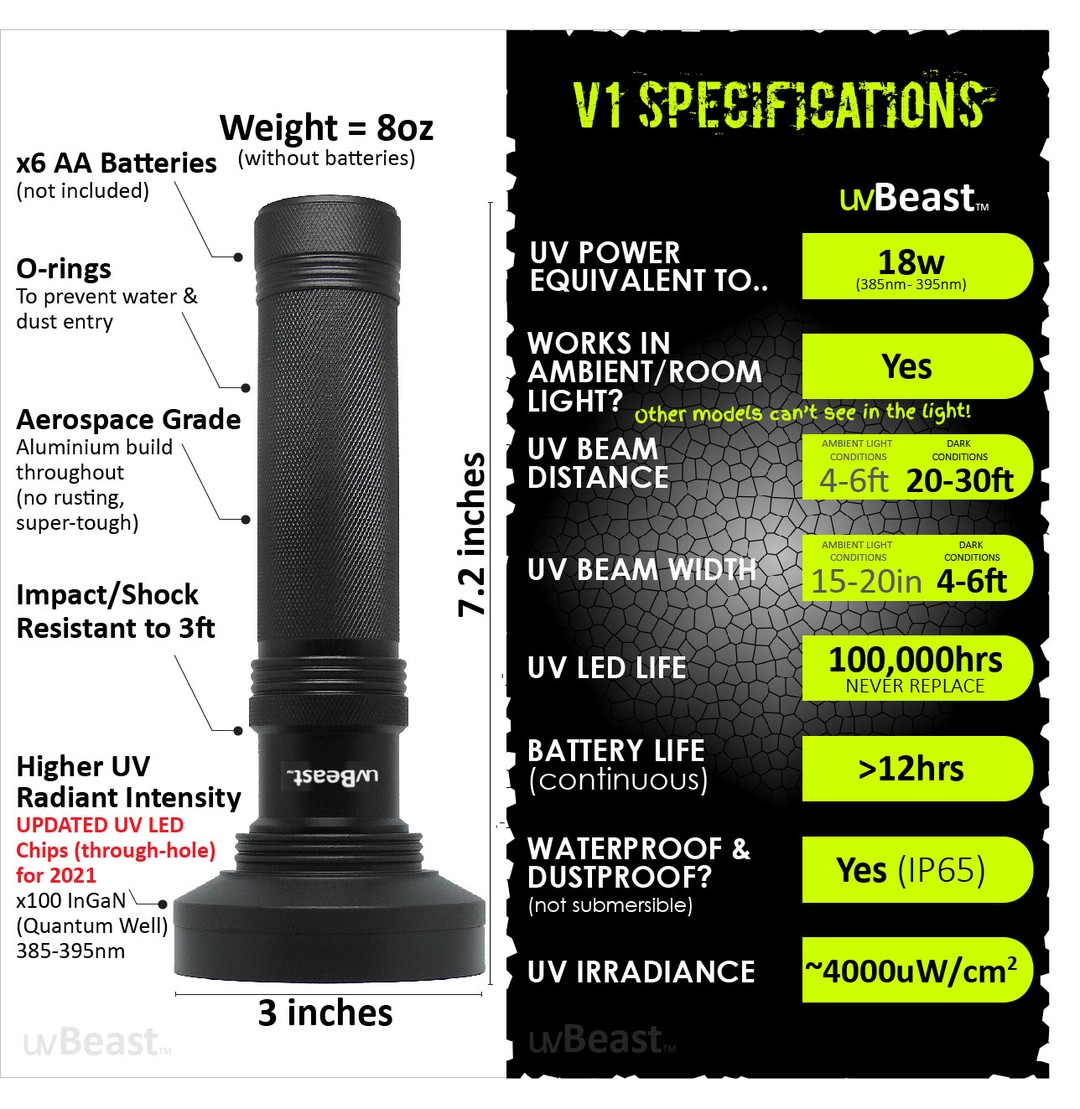
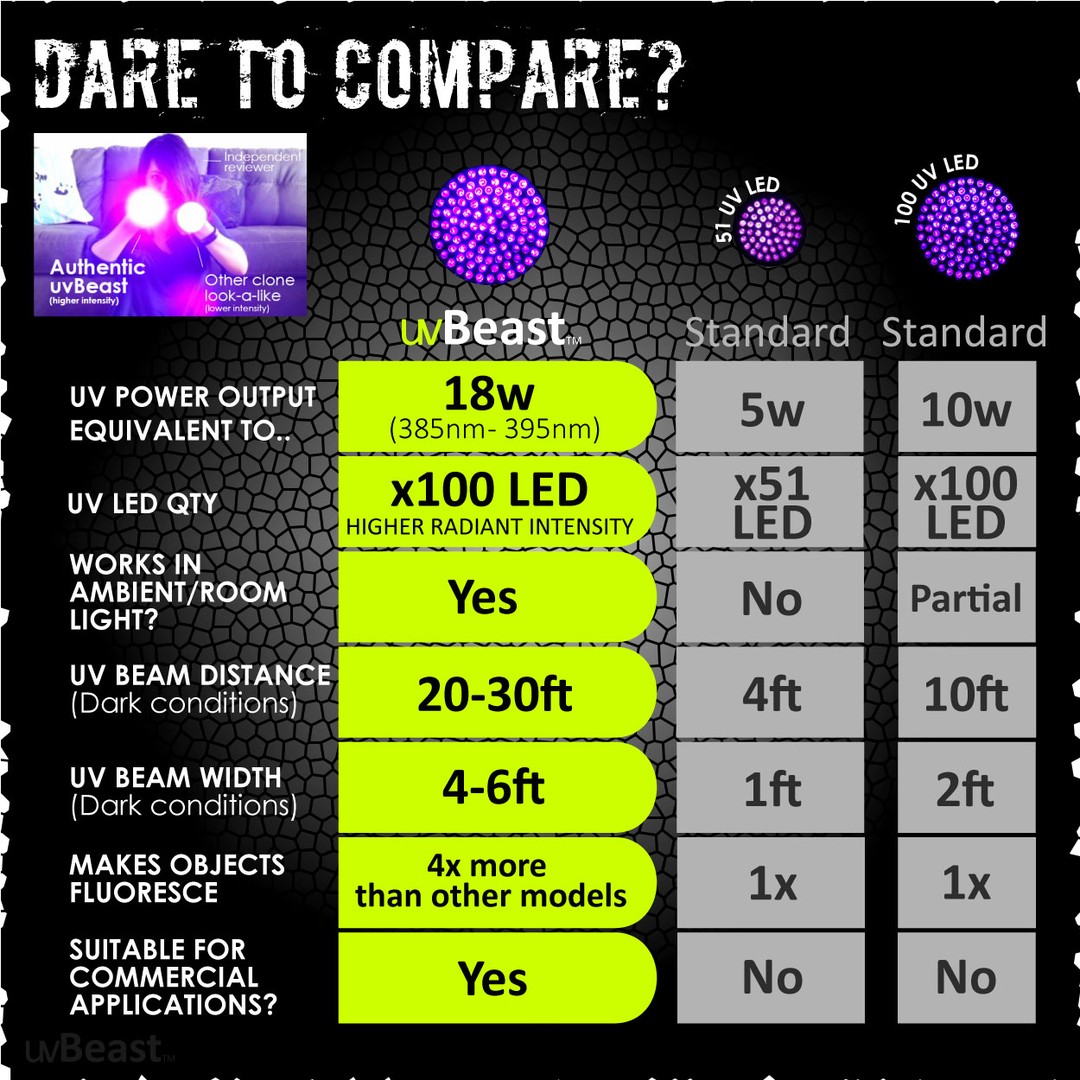



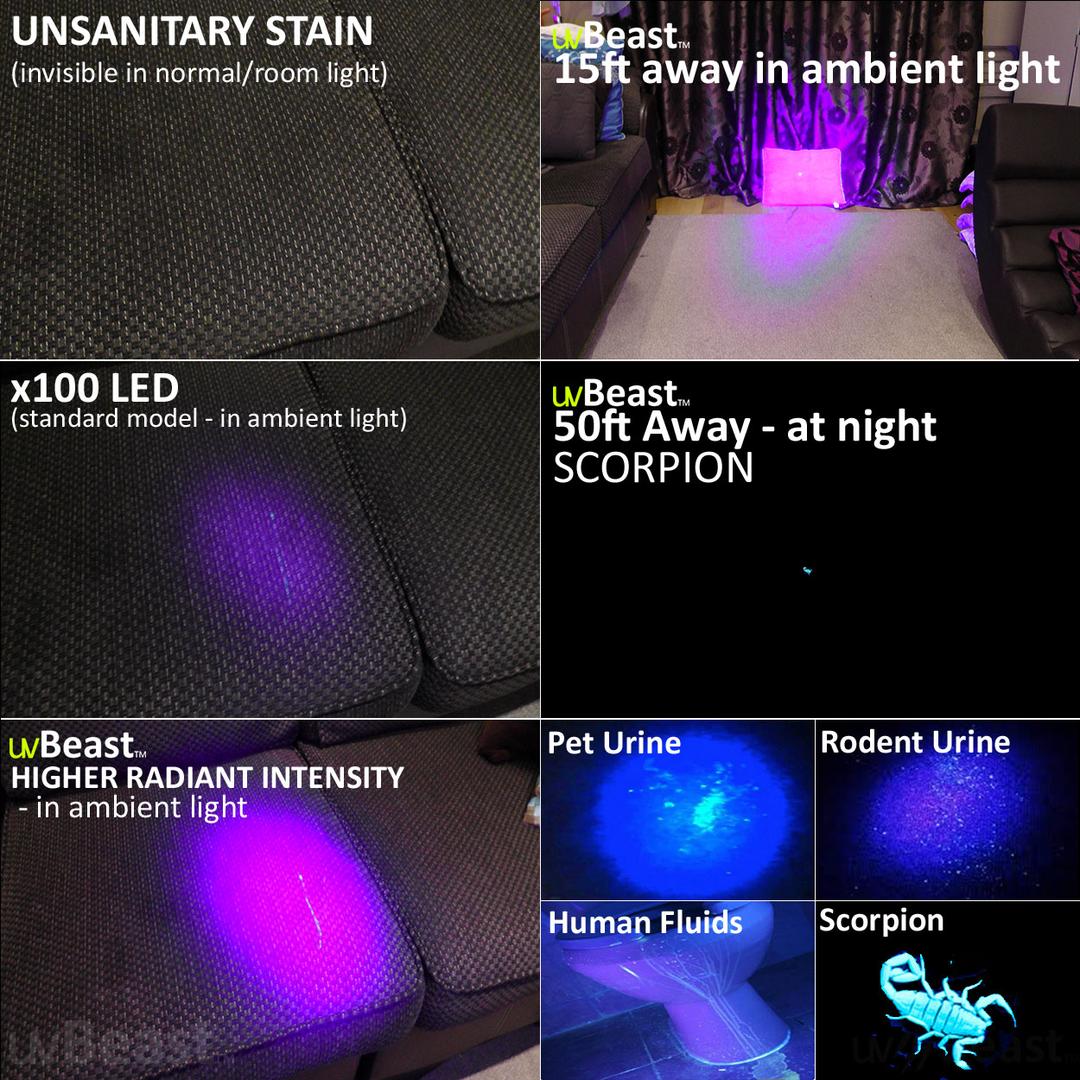
uvBeast V1 Black Light UV Flashlight Flood Effect - 385-395nm
BEST 1st TIME UPGRADE
BEST 1st TIME UPGRADE
"I had lost my old 100 led light . This one is 10 times better. It works even in broad daylight. I use it for finding urine spots in carpet. They are not all made equal." - William Gruenes
HIGH POWER with 30-feet Flood Effect – Professional Grade 385nm-395nm - Best for Commercial/Domestic Use - Works Even in Ambient Light – Patented - UK Design
Editor's recommendation: "The uvBeast V1 is a very powerful, well known and renowned device used by professionals. This is a great first (and long-lasting) step into the world of high intensity UV..without cables"
& Free Delivery in the USA
100% Money Back Guarantee
"I had lost my old 100 led light . This one is 10 times better. It works even in broad daylight. I use it for finding urine spots in carpet. They are not all made equal." - William Gruenes
HIGH POWER with 30-feet Flood Effect – Professional Grade 385nm-395nm - Best for Commercial/Domestic Use - Works Even in Ambient Light – Patented - UK Design
Editor's recommendation: "The uvBeast V1 is a very powerful, well known and renowned device used by professionals. This is a great first (and long-lasting) step into the world of high intensity UV..without cables"
What are people saying about the V1?
★ ★ ★ ★ ★
“I have a fetish for flashlights. I have like 8 or 9 of them. This one was truly worth every bit of money spent. I am a home inspector and an exterminator. There are times when need a blacklight and the establishment simply cannot turn out all the lights. I don't have to carry two separate flash lights for the job. This one is perfect for me. I love love love it..”
—Tammy Day, USA
★ ★ ★ ★ ★
“Truly the BEST UV light I have ever used. It is quality outside and inside. I own about a dozen different UV lights ranging from $10 to $100 and this truly is head above shoulders of those lights.”
—Helios, USA
★ ★ ★ ★ ★
"I work for Burns Pest Elimination in Phoenix, Arizona. Needless to say, we have lots of scorpions here. One of our technicians bought a uvBeast to do blacklight inspections. He was so happy and successful with it that he and two others made a video of one of the inspections he did. They caught 42 scorpions at one location that night! They put the video on our Burns Team's face book page for other employees to watch and pretty soon other techs started purchasing a uvBeast too. So. . . . long story short, I ordered the 4 from you to give as gifts at our Christmas Party this year in December. I'm sure they will be a very popular item on the gift table!! The uvBeast is the best we've seen!”
—Burns Pest Elimination, USA
★ ★ ★ ★ ★
“I showed my wife how to use one of these lights to detect just how clean a bathroom is and OMG did she freak out. She went to Home Depot and spent $150 on bleach and all the supplies possible to scrub and bleach bathrooms and other areas. I purchased this light due to its output being WAY higher then the 51 LED light I had before. This light will show even if the lights are on, no need to shut all the light out this one is super powerful and really puts out the light. When it is on there is a lot of heat radiating from the lights, just put your hand in front of it and you will see. Now my wife black lights everything, guess it is sweet, we have a MUCH cleaner home. My wife will never use a public bathroom again, but hey our house is cleaner.”
—Papa T., USA
★ ★ ★ ★ ★
"Like the title says, this thing is a beast! All metal and solid design, and probably one of the strongest UVA ultraviolet lights I've used. I have a few smaller ones that fit in my pocket, but they don't come near the power of this one. This is an industry-grade UV flashlight and takes care of business when you need it to. Scorpions, liquid stains, and other substances can't hide from being seen with this one. Even during the daytime you can use this and see things that other flashlights wouldn't be able to show you. I was searching for the best UV flashlight to buy on Amazon when I found the uvBeast, and this is definitely the best. Please let me be clear about something else, too. I know a lot of people are getting discounts and whatnot for their reviews. I did not receive any discount or anything else for this. I just ordered it and was really glad that I did after I've used it for a few different applications. In fact, I would have paid a little more for it if I had to knowing it was this good, but I hope that the seller doesn't raise the price on this one because I want to get another one of these as a backup and another for a friend sometime soon. If you're looking for an industry grade UV light for multiple uses for business or personal, this is definitely worth getting.”
—James Wasil, USA
★ ★ ★ ★ ★
“I am a hospitality professional. I currently serve as the General Manager for a large chain hotel. Our cleaning process involves using blacklights to inspect our cleanliness. I use the uvBeast to inspect our inspectors and ensure our process is thorough. What truly sets this light apart is the intensity. Any stains or soiling really jump out at you when you inspect with a light of this quality. It is also great for detecting dust. I can quickly inspect a guest room and tell if the room attendant properly completed her high dusting procedures by using this light. Its also great for detecting if the proper cleaning clothes are being used in the rooms. Normal terrycloth will generally leave lint behind while good microfiber will not and this tool will reveal any lint fibers. In regards to the light itself it is very well built all while not being too large or cumbersome. Someone could carry and use this light throughout the day with no fatigue. The switching mechanism is also solid which you don't always find with lights that are this inexpensive. Finally, I can say without a shadow of a doubt the company stands behind their product. I had a battery issue after purchase which caused my light to not perform at it's optimal level. The company made no excuses, they quickly walked me through troubleshooting procedures and when they couldn't immediately solve the issue they sent me a replacement with no questions asked. Even after sending replacement they went through additional troubleshooting which revealed I had used substandard batteries which made the light not perform correctly. Talk about service after the sale! I'm sure this light would be perfect for any number of industries but I can tell you for certain it is great for anyone in the hospitality, hotel, or sanitation industry. I am now a customer for life and can't see us using any blacklight other than the uvBeast.”
—D. Floyd, USA
★ ★ ★ ★ ★
"It lit up and illuminated my entire living room. I am just an Average-Joe consumer. This isn't some foreign made junk light. I'm not being paid. I paid full price and bought this for my Halloween party. Don't even worry about the cost, it's worth it.”
—Jeannie C., USA
★ ★ ★ ★ ★
“The UV Beast Team understand what customers want. If you are new to UV Flashlights they provide information that will help you to be a better shopper. After my research in comparing similar brands I find this to be the best value.”
—Joey, USA
UPDATED LEDs
Avoid the common the older 2014 LEDs. New upgraded high flux density LEDs (through hole) give you more V1 UV FLOOD POWER and bang for your buck! Upgrades on all V1 and V2 models.
WHY uvBEAST?
IT’S THE KING OF UV FLASHLIGHTS. Higher power and broader band UV give you a wider range of uses, unlike other models - you get PROFESSIONAL CLASS 385nm and 395nm type UV in one light! The original and authentic uvBeast [patented] has cheap look-a-likes, copies, and clones – IF IT DOESN’T HAVE OUR NAME, IT’S NOT THE SAME!
BIG FLOOD EFFECT
Adjusted UV for high power needs. Scorpions at 50ft! Scan entire floors for pet urine stains in seconds NOT minutes. Fluorescence made easier/quicker than ever before. You’ll definitely notice the difference.
BETTER RESULTS
Mass market weaker UV LEDs mean being on your hands-n-knees OR waiting for dark conditions. uvBeast LEDs are quality checked against ASQ standards. We’re serious about UV!
- Battery(not incl.): x6 AA size required (1.5v Alkaline)
- Finish: Anodized Black
- Material: Aerospace Grade Aluminium
- Special Features: 385-395nm UV high radiant intensity; Flood-effect beam
- Average Battery Life: 12 hours
The Problem With Other UV Flashlights
For most of us, they’re just too damn dim! They’re impractical. You’ll need total darkness, be within 2 feet, and literally on top of, your area of interest. You’ll mostly be on your hands-n-knees, in the dark!
Floodlight effect Using Enhanced UV Led Technology
Pumping out an equivalent to a massive 18 watts (100 x 0.18w) of 385-395nm ultraviolet light, it’s a beast! With our enhanced UK-engineered higher radiant intensity LEDs (InGaN) you’ll have more power than other UV flashlights. Want a floodlight effect? With this much power you’ll be able to see 20-30 feet ahead (not 2ft), see objects fluoresce brighter, and cover large areas fast (not ft by ft). You won’t miss a thing. Dark conditions? Well this beast is designed to be used even in ambient/interior light conditions, it’s that powerful, that convenient!
So powerful, We're Used For Commercial Applications Too
Commercial applications use UV for NDT, HVAC, Automotive, Leak detection, Adhesive curing, Crime scene investigation, Antique appraisal, Environment appraisal, Conformity quality abnormalities, and to verify hygiene levels before/after cleaning tasks in properties, hotels, restaurants, kitchens, and cleaning operations. Plus it’s waterproof, dustproof, shockproof, and corrosion proof, ready for commercial use.
Domestic use suited for spotting scorpions from 50ft away, dry pet urine stains, mouse/rat urine trails, unhygienic body fluids, and checking hygiene levels in rooms, carpets, kitchens, toilets etc. Also very popular with Tomato Hornworm identification, Entymologists/Lepidopterologists (insects/caterpillars), Disc Golfers, Fossil Hunters, Ghost Hunters, Fly Fishing, Art Collectors, Gemstone identification, Glow in the dark charging, UV paintings and displays, etc.
This Isn't Just Another UV Flashlight
Broken down to around $0.35 per UV LED, we think this represents great payback. Especially when they’ll last for 100,000 hours, so you’ll never need to replace them. And that’s just the LEDs. We’ve also added commercial aerospace-grade aluminium build throughout, and sealed it against water and dust.
Simply put, it’s probably the most powerful UV flashlight at this price!
See In Even Higher Definition
Our color tint formula optimized for wavelength blocking and transmission with the uvBeast UV flashlight. Glasses INCLUDED with the uvBeast V1
Professionals use our UV lights. If it's good enough for them, it'll be great for you.
It'll bring seismic improvements in the way you'll use UV.
Are you disappointed with or worried about inferior (UV) results? uvBeast UV flashlights are solely designed with that inferiority taken right out. Higher power UV will give you results that will astonish you.
We only do higher intensity powerful UV. Because it's the biggest single thing that will make all the difference to you.
Tell me more.
-
What UV wavelength is this?
This is ultraviolet light emitted in the 385-395nm (nanometer) band. Note that visible light can start at 395nm+ which is the "violet" region - the first region in the rainbow. Below this is the "ultra" violet region which the human eye cannot see.
So, coming back to what we just said - this light emits UV in the 385-395nm wavelength range. This means that the maximum density of the flux (or the majority of the UV emitted) is between this band. This is good news! 395nm+ is visible light - which you don't need. Many UV flashlights in the market are 395, 400, 405, 410 and often can be marketed as "395nm" UV lights but in reality emit a substantial amount of 400nm+ UV, which will stray too much into the visible light region - visible light won't fluoresce items, which means not much is going is going to show up! Purple party lights are often characterized by this, and you don't want to have these in your UV flashlight. They will not cause the necessary or sufficient excitation required for objects to fluoresce.
Another point of note is that often a narrow band such as 390-395nm or 395-400nm is not ideal to fluoresce many items of interest which you may require. Some things will show up under that type of UV while others won't. This explains why you'll often hear users say, "This light shows things up that my other lights don't." The reason is because under a broader band you'll see a greater variety of items of interest fluoresce.
-
What's the difference between your 385-395nm and your 365nm UV wavelength flashlights?
Some of our models emit at 385-395nm UV wavelength range, and others emit at 365nm. "nm" stands or nanometer as a measure of wavelength on the electromagnetic spectrum. 395nm+ (greater than 395nm is the visible light region, then moving into infrared).
It's not necessarily the case of which is better, but more about which one suits your needs and requirements the best. If you're new to UV a 365nm model will have you surprised as the emitted light will appear DIM to the eyes, but excitation of objects is high and so fluorescence is correspondingly high. The 385-395nm models will emit more visible light relative to the 365nm model which can sometimes be useful for navigational purposes.
Different items will show up under the different wavelengths. As a rough guide, the 385-395nm devices are more than adequate for scorpions, finding fluid leaks, fossil hunting (including bones), urine identification, various minerals, charging of photo phosphorescent substances (i.e. glow-in-the-dark items), vaseline glass, flora and fauna, and similar. Under 365nm UV you get to see all of the above (with much better contrast as there's minimal visible light interference), plus more items will show up. 365nm will fluoresce a wider variety of minerals and also in different visible colors, stains will pop out, UV security features will stand out (as they're designed for 365nm UV), curing will be better, and for those who prefer uncontaminated UV at a wavelength where the widest variety of objects will fluoresce, then 365nm is the best choice. But again, pay attention to your requirements as in many cases 385-395nm from our V1 device is perfectly adequate for many applications.
In a nutshell. The 385-395nm have relatively more visible light and are suitable for many applications including the common ones, plus more. The 365nm devices are a great at all tasks requiring UV and will go beyond into giving you more precise and great contrasting results. Many folks often prefer to have both types to hand as we've found from purchasing habits on our store.
-
What are the distinguishing features of the V1?
(1) Possibly unlike other vendors, we are continuously upgrading all of our models as and when we identify opportunities to do so. So with the V1, we have upgraded the UV LEDs with 2021 better output through-hole LEDs. These LEDs have a revised and upgraded post, anvil, and semi-conductor chip - which are the tiny components in the LED capsule. These revisions ensure that we're giving you the maximum flux density of ultra violet for your buck. In plain English, that's more useable UV at the right wavelength, straight out of the business end. We don't want you using older year 2014 LEDs when newer updated LED chips are available.
(2) You're getting broader band UV. Typically the bands commonly seen are the less expensive 390-395nm or 395-400nm UV wavelength band - 5nm band. The problem with a narrow band is that not everything you might want to see shows up under the UV. This explains why some UV flashlights are great for easy-to-spot things like scorpions, but when it comes to the more elusive things like stains, urine, or imperfections you want to see, they don't show up. You have to switch to a different UV flashlight for those tasks. But with a broad band of 385-395nm - 10nm band - a whole lot more shows up because some items will only fluoresce with UV under 390nm. You have likely heard of people excited with their new UV flashlight they just got from the store, which works great for their glow paints and sneakers, but doesn't show up the finer things like stains.
(3) We think you'll be hard pushed to find a more intense UV flashlight at these prices. Along with the necessary top-notch quality of the UV beam, both of which need to be present to result in a great performing UV flashlight. Producing a high intensity UV beam isn't trivial. Yes, you'll come across many examples. But trust us, there is more to it than meets the eye. You'll not only need to confident with the intensity of the UV beam, but also the quality of the UV emitted by the LEDs.
-
What are the glasses for?
The purpose of the UV glasses provided with some models is primarily for enhanced and amplified viewing of fluorescence (i.e. the items of interest that you want to see). This is particularly effective when (1) traces of fluorescence and/or excitation effects are weak and hard to otherwise spot, and (2) when conditions in the environment present high color “noise”. In addition, our glasses will sharpen and clarify the viewed surroundings and will show any reaction to the UV light i.e. fluorescence, with sharper contrast.
The secondary purpose is to reduce glare and discomfort (by the 385-395nm wavelength range) the user may experience when using the uvBeast especially during prolonged periods. The purple visible wavelength from the uvBeast 385-395nm models can sometimes be slightly overwhelming when against certain backgrounds and substrates.
These glasses were primarily designed to filter out interfering visible wavelengths from the beam of some models of the uvBeast which are in the longer wavelengths (above 365nm). This spectral distribution is a normal characteristic of LED technology as opposed to laser diode technology, and visible light from the uvBeast only comprises a small amount of flux relative to the entire spectral output.
The color tint of the glasses are of a special formula adjusted to the uvBeast’s spectral emission and distribution flux, where transmission of the appropriate and wanted wavelengths are either granted or denied transmission.(For further information please “Is UV harmful to my eyes” in this FAQ section).
-
Is this UV flashlight harmful?
UV from the uvBeast is not dangerous to the eye. Please refer to the FDA's 21 CFR 1040 - PERFORMANCE STANDARDS FOR LIGHT-EMITTING PRODUCTS paper.
The FDA classifies "harmful" light emitters being laser emitters, sunlamps (for tanning), UV mercury vapor lamps, and medical UV devices.
And this is scientifically correct since the dangerous types of UV are:
1. UV-B and UV-C which are below 315nm which is also known as shortwave UV in the actinic region. Sunlight does contain UV-B which is why you'll see "dangers of sun exposure articles", whilst the Earth's atmosphere filters out UV-C from the Sun - good thing as it has DNA altering characteristics which is why it is used as a germicide
2. Sunlamps that are VERY high intensity which are designed for darkening the skin via exposure for several hours.
All current uvBeast models emit UV-A (above 315nm wavelength) which is not harmful to the eyes nor skin, and moreover the intensity is not that of sunlamps. Moreover the UV emission is at a wavelength of 365nm, or 385-395nm which is well above the dangerous "315nm and below" UVC region.
However, it is not advisable to look directly at the uvBeast since it will cause discomfort similar to looking at any intense light. The UV glasses which are provided with some of our models will assist in reducing the glare effects and any discomfort that some users may experience.
-
What are the uses of this UV flashlight?
You may be surprised to know that a comprehensive answer to this question is difficult. There are the common uses most people know, the not-so-common, and even the ones we ourselves are learning about from users.
For most, deploying UV is a game changer.
Here's a list for quick reference.
Whether your needs are commercial or domestic uvBeast will not disappoint. Among other applications that require UV light, uvBeast is especially designed (but not limited to) to fluoresce the following:
-
Cat/Dog urine (Note: urine needs to be dry - as wet/fresh urine doesn’t fluoresce under UV, but a wet urine stain is easily spotted by the eye anyhow)
-
Scorpions and their dens (but the very young, and adults just molted may not glow as much)
-
Rat/Mouse urine trails (appear as small dots since they urinate and defecate as they travel and eat – weird I know, glad humans aren't like that. But then again..)
-
Human Body Fluids (urine, semen – sorry but had to include for completeness)
-
Unsanitary stains, and the like
-
UV Curing. For applications that require 365nm or work with higher wavelengths such as 385-395nm, but not adhesives requiring higher than that
-
Leak detection. Using UV dyes, leaks can be detected know matter how small in just about any machine in use known to man (e.g. AC units, vehicles, aircraft engines, oil rigs
-
Conformity detection. Examples include paint applications, glue coatings, correct coatings against substrates
-
Artwork and antique inspection, including uranium glass, glow paint
-
Property hygiene appraisal, houses, rental properties, hotels
-
UV photography
-
UV paint charging and fluorescence. Charging of fishing lures, charging of golf discs
-
Food quality inspection. Fruits, fish, coffee beans
-
Gemstone identification. Rubies, diamonds, sodalite, amber, and many others
-
Caterpillar identification (including the Tomato Hornworm crop destroyer)
-
Resin detection (like glue, wall paint, etc.)
-
Fossil detection
-
Ringworm and mold detection (not all species of mold)
-
Narcotic detection
-
Security markings
-
ID and paper currency verification
-
Wood (yes wood!) identification and verification
..and in fact the list goes on (if that wasn't enough).
If you have any other (quirky) uses let us know and we'll include it!
-
-
Is this a flood beam?
The V1 and V2 models are characterized or can be described as having a flood-like beam, while the V3 models have a more focussed spot beam. Both have different beam properties in terms of how far the UV beam travels, versus how wide the UV beam spreads. So pick the beam shape which most suits your application or variety of applications.
The V1 and V2 will spread the UV beam over a relatively short distance from where you're standing, which means you get good coverage at close ranges. For example, the V1 and V2 models will cover a large area in a dark room or similar environment. The V3 models although having a higher intensity of UV, will also be effective in say a dark room, but slightly less so - the beam coverage will not be as wide. However, since a scanning motion is used with UV lights, the difference may not be so noticeable.
The V3 models however have the capability of throwing higher intensity UV out into the distance, which is perhaps what you might require for your application.
IMPORTANT NOTE (for understanding UV beam width):
When you first use a uvBeast UV flashlight and try to "see" how wide the UV beam is, it can be misleading. The beam point you'll be looking at will be the visible portion of the beam only, and may appear "narrower" than it actually is. The way to verify this (we've done it so many times) is to observe items that glow (fluoresce) well outside of the visible width of the beam. This means that invisible UV is reaching the item that is fluorescing.
Another attribute to be aware of with UV is the background color and material you're shining the beam on. If it's a dark wall you'll again, as described above, only see the visible portion of the beam. On a dark wall it will appear narrower than it actually is. Shine the UV on a white or near white wall and all of a sudden you'll see a wider spot! Again to test the invisible UV portion of the beam spot, look for fluorescence outside of the visible spot you can see with your eyes.
The above is just an example of how UV can be and will be counter intuitive at first. But you'll quickly traverse the learning curve the more you experiment and try it out.
-
How many watts is this? And is there a lumens rating like regular flashlights?
This is a good question because it's often asked. But there are differences which apply to LEDs and UV lights in particular. And this is important to note for UV users.
In summary, watts is not a meaningful measure for the intensity of LEDs (you can read below as to why). Lumens and LUX are not measures we use in the UV LED industry because these only apply to visible light LEDs. Instead in the UV industry we use radiant intensity and irradiance to measure how intense and how powerful a UV light source is. The below is a more detailed explanation for those interested. Otherwise jump to the end of this FAQ to read off the specifications.
"Watts" as a measure of brightness for LEDs is not a meaningful measure of brightness in the LED industry because wattage is talking about the energy it takes to produce a certain amount of light. This worked well with filament and incandescent lamps where the higher the wattage the brighter the light. The trouble is that the lighting industry has advanced such that wattage values are not directly translated into brightness - it's possible to have a lower wattage LED and yet it is a brighter light relative to another light source or LED with a higher wattage. Moreover, depending on the electronics and the efficiency of the LEDs, the energy (watts) supplied is NOT directly translated into light at 100% efficiency. Much if not most of that energy (wattage) is lost through heat whereby very little is actually translated into light. You could have a very high wattage LED, but most of that energy will not be directly translated into the useable light that you're after. So the LED industry has moved away from using wattage as a standard for brightness. So wattage doesn't really speak to how bright an LED light is.
So the LED industry mainly use terms such as Lumens, LUX, and Candela. Lumens is the measure of how intense the resultant or actual emitted light is and is measured in lumens. The higher the lumens the more intense the light emitted. LUX or luminous flux is the measure of light falling within a given unit of area. This is a measure of the density of the light emitted and how it's dispersed or spread. For instance you can have a very high Lumens rating but a low LUX rating depending on how the beam is emitted. It's the difference between a 500 watt light bulb and a small 50 lumen flashlight. Which one is brighter? The 500w light bulb because it can light an entire room. Which one is more powerful over a given area? The 50lm flashlight because it channels it's light into a particular viewing area. See the relevance of terminology here to give a more meaningful understanding? (We won't go into candela, steradians, and the solid angle measure, nor the inverse square law of light, as it's a bit of an overkill for this).
Now here comes the twist with ultraviolet light (or radiation to be more exact). Note: Don't freak out with that word radiation, because it is just describing the energy along the electromagnetic spectrum where visible light is also a type of radiation along with radio waves.
Lumens and LUX measurements only pertain to visible light. So this suits the regular flashlight industry and their users can happily converse with one another all day long. But UV is light which does not fall into the visible spectrum. So the UV industry to describe the attributes of their light sources cannot use terms such as lumens or LUX. This is only used as a measure of the light observed.
In the UV industry we use radiant intensity and irradiance to measure the same thing (Lumens and LUX respectively).
Radiant intensity is the measure of ultraviolet radiation actually emitted or output. Which is what you want or should know. It's the useable UV light you're going to use - remember wattage in a UV light is NOT meaningful as it attempts to describe the watts going in to power an LED semi-conductor. But that energy is mostly lost to heat, internal resistance, etc. And this can vary widely with systems being 80% efficient to 20% efficient. The input watts will mask this rather badly.
What's important to look out for is the energy that comes out of the business end - the actual radiation emitted. That's what actually and really counts. So radiant intensity of a UV flashlight is the actual UV energy emitted and is measured in watts or more typically milli and micro watts. This tells you the true intensity of UV being emitted.
Irradiance is like LUX but for ultraviolet light. Irradiance is the amount of ultraviolet falling on a given unit area and is measured in watts per square meter, or more typically milli or micro watts per square centimeter.
So, in a nutshell lumens and watts are not used by the UV industry to measure performance of UV LEDs. Instead radiant intensity and irradiance are.
Technical information we know, but we thought it deserves an explanation.
Now you can make sense of the following.
Here are the specs for the V1:
UV wavelength: 385-395nm
UV Radiant Intensity: 1000mw
UV Irradiance: 4000uW/cm2 from approx. 24 inch distance
-
Do you provide support or assistance with this product after purchase?
Yes. For any type of assistance this is what we have put in place to ensure you get yourself up and running, as well as for any troubleshooting during or after:
1. On the back of the product packaging for critical operating instructions
2. Instructional labels on the device itself
3. Emailed instructions - if you gave permission upon purchase
4. Complete User Manual - downloadable from our website. This covers most if not all issues and procedures, including any further questions you may have
5. A Help Center on our website with questions and answers of the most common issues or queries
The most common "false alarms" are: incorrect battery orientation; bad battery in the batch (even new sets can contain duds), fitting the modules incorrectly, and so on. Easy fixes. We won't mention the oft-used phrase RTFM, but unfortunately sometimes it can be true.
Consulting the above will resolve the vast majority of queries and will be the easiest. quickest, and most simplest way to address and fix any issues. Not to mention the best use of your time!
We also have support contact if all else fails at support@uvbeast.com






